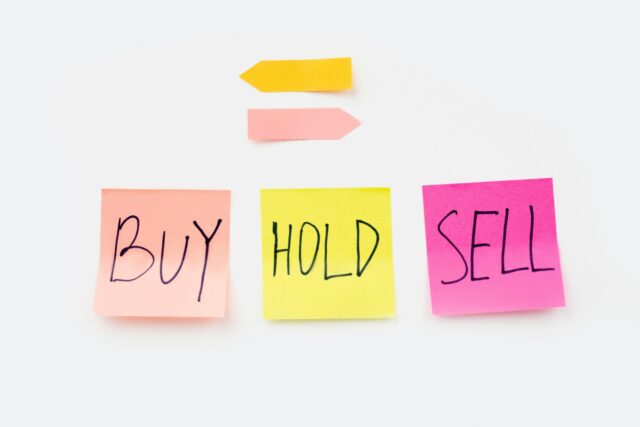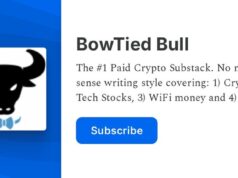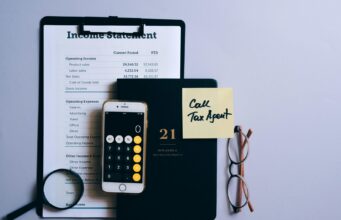
Attempting to come up with your own higher risk investment portfolio only makes sense if you’re worth over a million dollars. This is something we’ve said several times in the past and yet people still try to cling on to their $100K trading portfolios. We’ll explain why it doesn’t make sense, what a “return” is and how to avoid falling into this trap. Remember, only 2-3% of professional money managers outperform the market after fees and these individuals have gone to top tier schools, get to meet the CEOs and CFOs of public companies regularly and do it as a full time profession. Thinking that you’ll have enough time to compete with them while simultaneously working your job/career and building a secondary form of income is just not a smart idea. That said we’ll lay out the why.
Unnecessary Risk – No Point
What is a Return? A return when you put money to work today that will lead to a higher dollar value in the future. So if you spend $1 today but in five years it is worth $2, that is a 100% return over five years. In addition, if you spend $10 today, but this leads to you *saving* $20 in the future, this means you also incurred a positive return (100% as well). That last one is the part where people get the math twisted. If you’re in the <$500K net worth territory there are tons of ways to generate a 100% return without significant risk: bulk purchases and cost downs.
Bulk Purchase: Lets use two options, you can either 1) invest in a bunch of stocks and bonds with $10,000 or 2) you are allowed to bulk purchase anything you like with $10,000. We will all but guarantee, the second option will generate much higher returns than the first one. Why? Scale. If you want an easy way to get a 100% return off of your $10,000 you should purchase the following in bulk: toothpaste, toilet paper, towels, underwear, socks, garbage bags, cases of your favorite drinks, cases of your preferred protein, cases of your favorite frozen food and anything else that you routinely use. Why? Well if you can buy a significant amount it means you’re locking in a 50% return at minimum.
Think of yourself as a convenient store. The only reason why a convenient store makes money is they simply buy in bulk and sell at a slight mark up to suggested retail. By doing this yourself you’re able to lock in the gains while simultaneously avoiding the additional mark ups in the future (you won’t need to go to them, since you’re the actual store now). If you think this is a joke, we would go ahead and track your expenses. We will bet you ratchet up a few hundred dollars every month in convenience related purchases that would go to zero, while simultaneously paying 30-50% less by purchasing in bulk. For fun, this is a good practice to have even when you make a bunch of money, have one closet full of stuff you have to buy anyway (detergent, garbage bags, paper towels etc.). Again, 50% return locked in.
Fixed Costs: Another big one in terms of guaranteed returns (or fixed costs) is your location and your rent. There are two strategies here, calculate the cost of your commute + your annual rent and see if you can “negotiate down”. Depending on the market it is possible to negotiate a lower payment if you fund the entire year in a single day. In addition to this, if you commute you have to calculate this cost into the cost of your rent and see if you can net out a positive return.
The reality is that when you’re young you just don’t have the money to start up in the best location. So you are probably moving longer distances than you want to offset the cost of some rental expense. Over time, this math breaks down as the commuting cost (say $300 a month or even $400) needs to be added to your rental cost as a “fixed” payment. So if you can move to a closer spot, increase your rent by $250… You actually need to move. This similar math applies to your rent vs. buy decision (again, remember that buying a place locks you into a location so you have to stay there for at last 10 year to de-risk the return profile).
Finally Forced Returns: This is the last and most important item. If you followed our prior two posts, it suggests that unless you’re rich, there is no reason to take on additional risk for no guarantee of returns. If you can invest in anything and put 3-4 hours into it pushing the returns up to 20-50%… You have to do it. Why? This is called paying your dues. When you are not rich, life has a way of punishing people for taking the lazy way out. That one stock” or “one investment” is going to go south and suddenly you lost an entire year of investing. Remember, if your net worth takes a step back by more than 10% you have lost an entire year of work.
Forced returns based on our prior recommendations are: 1) fixed up websites, 2) additional hours to a new project with limited downside, 3) fixed up homes/properties where you’re next to certain you can move the needle by 20% or more and 4) any and all re-selling opportunities that require you to hold some inventory.
Ultra Low-end: Before moving on, there are even some people who attempt to make “big stock bets” when they only have $50,000 to invest. This is beyond crazy as you’re better off clicking around the internet and opening bank accounts to get returns. You can do extremely frugal things such as churn bank accounts ($300 sign ups), churn credit cards (25,000+ miles each about $250 in value) and of course bulk purchase gift cards of $1,000 or more. That last one is probably the best option for returns if you only have $50,000 to your name. You go online and buy gift cards at a discount to places you are forced to shop at (like a grocery store). The mark down can be as high as 5% getting you a guaranteed 5% return in less than 6 months (it means you’re locking in 10% gains per year with no risk). A good example is department stores like Target. While we don’t have the time to do this anymore, it actually works extremely well during holiday seasons as well. If you’re going to buy your brother or sister an iPhone for Christmas, just buy the $1,000 Apple gift card for ~$920 and buy the iPhone. Congrats you just got a discount from a store that “doesn’t offer discounts”.
Necessary Risk
Now the summary above reads like it is all about being “risk free”. The reality is that there is a huge difference between necessary and unnecessary risk. Society teaches us to avoid risk in general (90%+ of businesses fail, buy insurance for every issue fathomable etc.). There is a balance that needs to be cleared up. The balance is between unnecessary and necessary risk. The prior section highlighted a ton of ways to avoid unnecessary risk, if you’re not a millionaire you can get high returns since the amount of money you’re working with is small. $300 is a full 1% if you only have $30,000 while $300 is only 0.03% to a millionaire. This concept of always thinking in percentage terms should be written on a post-it and hung on every single refrigerator around the world. If your percentage return is higher than a point or two in less than a month it means you’re outperforming the “market rate”.
Leverage: Leverage works when you can sustain the time horizon risk. This is why we recommend going down a more levered path once you’re a millionaire. If you have a million dollars the income you’re getting (dividends, bonds, rental income etc) is going to provide a base line cash flow number. If you’re generating say 5% returns that is $50,000 a year. If we go ahead and cut that in half ($25,000) it means that a leverage ratio below ~$25,000 a year in payments is not good given a 30-year horizon.
Example: If you can buy a home and rent it out, your income from the $1M is going to cover the entire cost. Assume we go into a massive recession and the asset you bought is now worth “less” than what you bought it for. Well… It actually doesn’t matter. Fast forward 20-30 years and that asset is more likely than not going to be worth much more than what you paid for it. The cash flow from the asset went down during a bad down turn but it was still net income positive and cash flow positive.
This is what we’d define as necessary risk, if you want to continue building your net worth you are going to underperform your capabilities without leverage. Inflation eats at the value of the loan outstanding and the cash flow from your investments has already de-risked the need for a fire sale at any point in time.
Asymmetric Business Risk: Talking about stock piling necessary items while simultaneously suggesting a business/new venture is not something you’ll see on most websites. Most have an either or set-up: frugal save forever or risk on at all times. The reality is you can actually do both with the right priorities. It’s a matter of process over risk.
Example: Asymmetric risk to the upside is using any of your current skills and starting a service from it. While we absolutely hate services and time for money exchange options, for people who really don’t know “where to start” they are forced down this consulting/service route. You simply take what you do and offer it as a stand-alone entity. If what you’re doing cannot be offered as a stand-alone entity you might be in an area of work where there is no actual value being created (bureaucracy and significant politics is a tell-tale sign for no value addition). Simplistically, you take what you’re already doing and offer it as a private offering.
Once this step is done you’ll eventually get a sense for what type of physical product is needed (make sure it is recurring or consumable) and expand into that area over time. This type of risk needs to be taken as you’re leveraging your relationships with your current client/customer base to onboard them.
Conclusion: This should summarize the difference between necessary and unnecessary risk. It also highlights the importance of thinking in percentage returns and using leverage (inflation and cash flows) to your advantage in the future. If you can take out debt and use it as a tool (IE: let inflation devalue it over time without serious risk) it’s quite useful for optimizing you long-term returns. Just remember. No reason to add risk for no reason. This is where most people get messed up. They chase risk when there are risk free options that offer double digit returns if your net worth is currently under $1M.
















